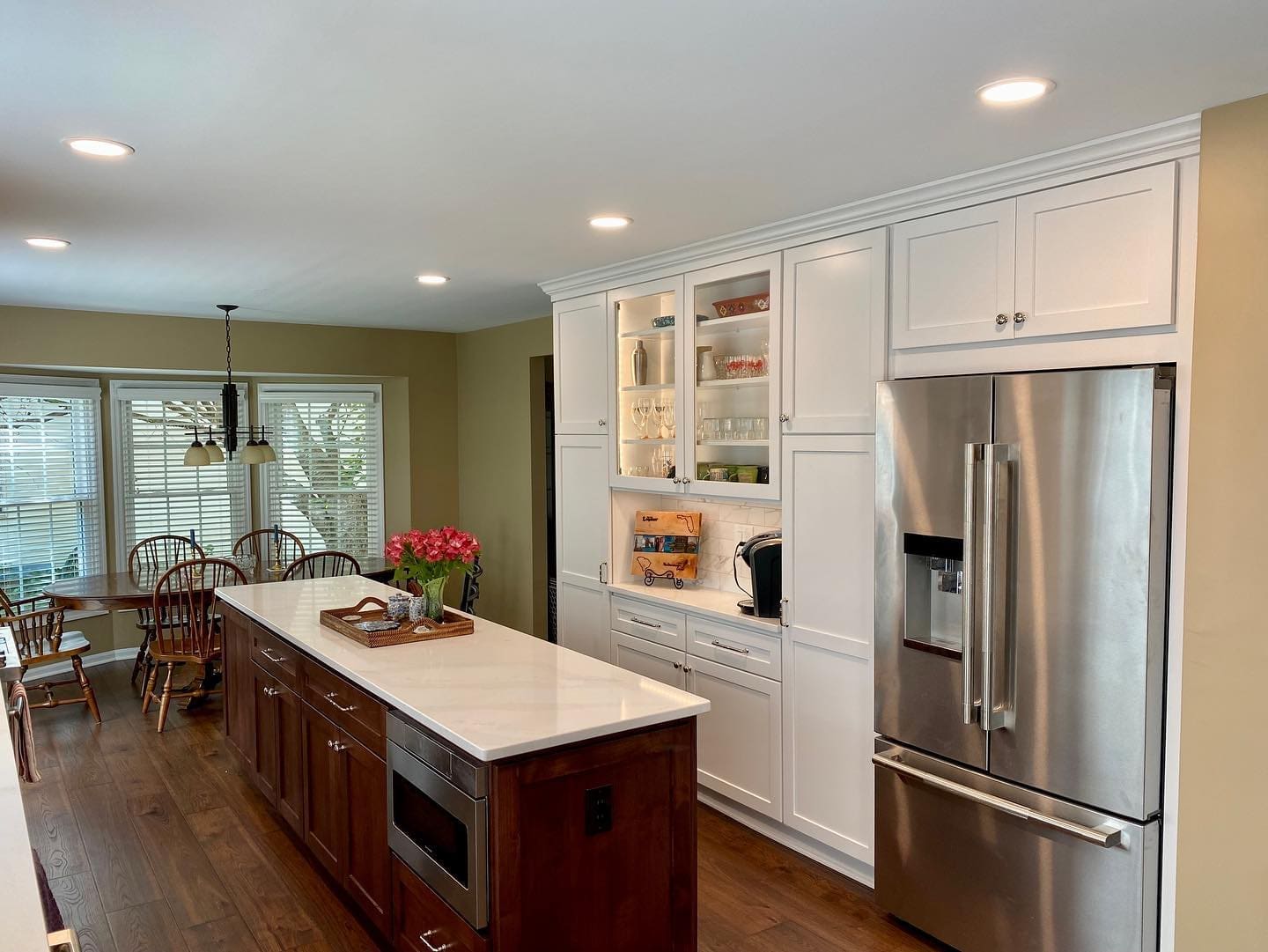 There are several considerations that a homeowner must entertain before they decide on a particular surface material for their new kitchen countertop. This surface may become the showpiece component of the new kitchen as well as being the most highly used surface in the home. Given the demands and popularity of the kitchen space, the countertop material is likely to become the most critical and difficult decision that a homeowner has to make with regards to their kitchen project. Let’s review some of the variables that need to be considered with the more popular and dominant countertop materials used in today’s kitchens: granite, quartz, marble/limestone/soapstone, solid surface, laminate, and concrete.
There are several considerations that a homeowner must entertain before they decide on a particular surface material for their new kitchen countertop. This surface may become the showpiece component of the new kitchen as well as being the most highly used surface in the home. Given the demands and popularity of the kitchen space, the countertop material is likely to become the most critical and difficult decision that a homeowner has to make with regards to their kitchen project. Let’s review some of the variables that need to be considered with the more popular and dominant countertop materials used in today’s kitchens: granite, quartz, marble/limestone/soapstone, solid surface, laminate, and concrete.
The Budget Variable
Generally speaking, the kitchen budget should allocate about one third (33%) of the total budget toward the cost associated with the countertop; and, more often than not, that figure can easily rise to roughly 40% of the gross budget, or more, if the homeowner builds the kitchen around the passionate desire for a particular countertop material. Obviously, a homeowner wants the best long-term value; and this is achieved by balancing the associated variables against the cost (per square foot) of the countertop material. One must also consider the transfer of value with respects to this countertop material being attractive to a new, prospective buyer of the home when it’s time to sell.
Among the most prevalent countertop materials used today, laminate surfaces are the least expensive option; and are attractive, serviceable, but tend not to score high in the transfer of value department. Following laminate, solid-surface materials become a logical bridge from laminate to stone and granite, (yet often overlapping the cost with some natural stones)l, looking and performing well while retaining most of their value in the transfer of value consideration. Beyond solid surface materials, the costs of the remainder of the group range, equal to or up to five times the cost, depending upon the rarity of the natural stone or the details and features added to the individual project. Suffice it to say that these surfaces constitute a considerable investment, so make sure you balance all your variables before making that final decision.
The ‘How I Live’ Variable
While most folks are, or can easily be swayed into, recognizing their budgetary issues with regards to a countertop material, these same folks are hesitant to examine their day-to-day living style and how it may influence their countertop decision. If you think about the child who gleefully asks, “Daddy, can we get a puppy–I promise to take care of him?”, then you’ll understand the point that’s being made here. Sometimes a desire for a particular material is not enough; and neither is the fact that you can afford it. Each countertop material has its inherent strengths, weaknesses and maintenance regimens. If the weaknesses and maintenance issues conflict with a household’s normal operations and challenges, then consider an alternate choice in material because it’s a lofty expectation (as with the puppy scenario) that a household will modify its normal behaviors just to accommodate the requirements of the new kitchen counter. So, do your homework on the shortcomings of each countertop material and be extremely honest in examining your normal living patterns before you settle on any material.
The Aesthetic Variable
Inasmuch as this variable is foremost on any countertop shopper’s mind, it doesn’t warrant a great deal of attention here. Everyone wants their new countertop to look good, perform beyond their expectations, and be the talking point of visiting friends and family. Such measures are a realistic goal and are achievable given the broad range of choices before you. You will find in laminate options, for example, that any conceivable coloration, texture, or pattern will be available to you. These options may emulate natural stone, tile or even a confetti look that will command attention in your eclectic kitchen. The smooth and flawless appeal of solid surface counters may provide the clarity and clean look you desire. Concrete is known for its design flexibility and can be worked to replicate a mass of stone, block of wood, or simply be an artist’s expression that ties everything together in your kitchen. Granite and quartz can render a stately look to a space that needs that bit of elegance, while never sacrificing the reality of the need of a durable, forgiving surface. Ceramic tile affords a sense of modularity whereby a variation of colors and textures can be utilized concurrently in order to balance-out the kitchen theme. Matte-polished limestone and soapstone constitute timeless looks of antiquity and function with a warming patina of naturally embellished stone luster. It’s a good idea to explore a number of different surfaces when putting your kitchen plans together; and you may discover that the countertop you initially intended to pursue just doesn’t have the overall aesthetic ‘pop’ that you were looking for in your new kitchen.












